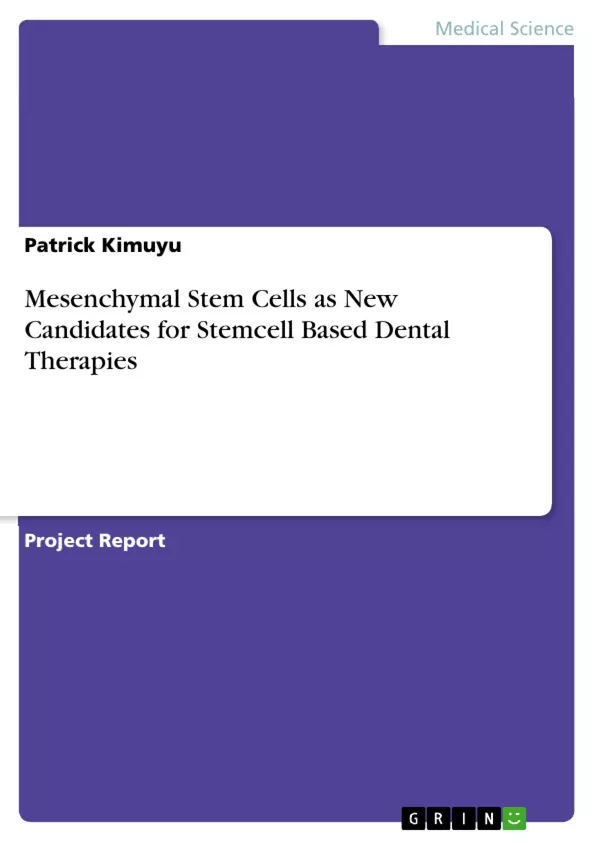This paper will provide a comprehensive review on the origin and types of MSCs in the dental tissue and the oral cavity. It will also discuss their therapeutic mechanisms that make them useful in dentistry and dental treatments.
Over the past few decades, stem cell research has gained extensive scientific inquiry. This aspect is attributable to the significance of stem cells in tissue engineering. It is apparent that tissue regeneration has emerged as a reliable medical approach for the treatment of tissue disorders and injuries. Initially, embryonic stem cells were preferred as candidates for regenerative medicine because these cells can be induced to replicate in a pluripotent state. However, stem cell research involving embryonic stem cells has attracted immense controversy. It is also associated with legal and ethical issues, thus limiting the use of embryonic stem cells in regenerative medicine.
Fortunately, the discovery of mesenchymal stem cells (MSCs), also referred to as adult stem cells, has restored promise for the development of stem cell therapies. Unlike embryonic stem cells, MSCs are free from legal and ethical concerns. MSCs are usually pluripotent progenitor cells that are generated in an array of tissues in both foetal and adult life. It is reported that these progenitor cells differentiate into cell types of the tissues that generate them, although studies indicate that they can differentiate cell types of other tissues. Currently, MSCs are used for regenerative therapies for a number of tissue disorders and injuries including bone regeneration. For instance, MSCs generated by the dental pulps and the oral cavity tissues have been found to possess the potential for dental tissue regeneration. These cells have also been found to useful in non-dental tissue repair.
Inhaltsverzeichnis (Table of Contents)
- Introduction
- Origin of Mesenchymal Stem Cells
- Mesenchymal Stem Cells in the Dental Pulps and Oral Cavity
- Dental pulp DPSC
- Apical papilla SCAP
- Periodontal ligaments PDLSC
- Dental follicle DFPC
- SHED
- Gingival fibroblast GFSC
- Therapeutic Mechanisms of Mesenchymal Stem Cells
- Application of Mesenchymal Stem Cells in Dentistry and Dental Treatments
- Conclusion
Zielsetzung und Themenschwerpunkte (Objectives and Key Themes)
This paper provides a comprehensive overview of mesenchymal stem cells (MSCs) derived from dental tissues and the oral cavity. It aims to elucidate their origin, types, therapeutic mechanisms, and potential applications in dentistry and dental treatments. The paper highlights the significance of MSCs in tissue regeneration and their potential to overcome challenges associated with embryonic stem cell research.
- Origin and types of mesenchymal stem cells (MSCs) in dental tissues and the oral cavity
- Therapeutic mechanisms of MSCs in promoting tissue regeneration
- Applications of MSCs in dentistry and dental treatments
- Comparison of MSCs derived from different sources
- Ethical considerations surrounding the use of MSCs in regenerative medicine
Zusammenfassung der Kapitel (Chapter Summaries)
- Introduction: This section provides a general overview of stem cell research and its significance in tissue engineering and regenerative medicine. It highlights the advantages of MSCs over embryonic stem cells, emphasizing their potential for various therapeutic applications.
- Origin of Mesenchymal Stem Cells: This section delves into the origins of MSCs, discussing their discovery in bone marrow and subsequent identification in various other tissues, including dental tissues and the oral cavity. It also discusses the unique characteristics of dental-tissue-derived MSCs.
- Mesenchymal Stem Cells in the Dental Pulps and Oral Cavity: This chapter focuses on the various types of MSCs found in dental tissues and the oral cavity. It explores the characteristics and differentiation potential of dental pulp stem cells (DPSCs), stem cells from apical papilla (SCAP), periodontal ligament stem cells (PDLSCs), stem cells from human exfoliated deciduous teeth (SHED), dental follicle progenitor cells (DFPCs), and gingival fibroblast stem cells (GFSCs).
- Dental pulp DPSC: This section details the characteristics and potential of dental pulp stem cells (DPSCs), highlighting their ability to differentiate into odontoblast-like cells and contribute to dentin formation. It explores the influence of biological factors in the microenvironment on DPSC differentiation.
- Apical papilla SCAP: This chapter focuses on stem cells from apical papilla (SCAP), comparing their differentiation potential with DPSCs and discussing their unique expression profiles of certain proteins.
Schlüsselwörter (Keywords)
Mesenchymal stem cells, dental tissue, oral cavity, regenerative medicine, tissue engineering, dental pulp stem cells, apical papilla stem cells, periodontal ligament stem cells, dental follicle progenitor cells, SHED, gingival fibroblast stem cells, odontogenic differentiation, multipotency, therapeutic mechanisms, dental treatments.
- Citar trabajo
- Patrick Kimuyu (Autor), 2018, Mesenchymal Stem Cells as New Candidates for Stemcell Based Dental Therapies, Múnich, GRIN Verlag, https://www.grin.com/document/388765



